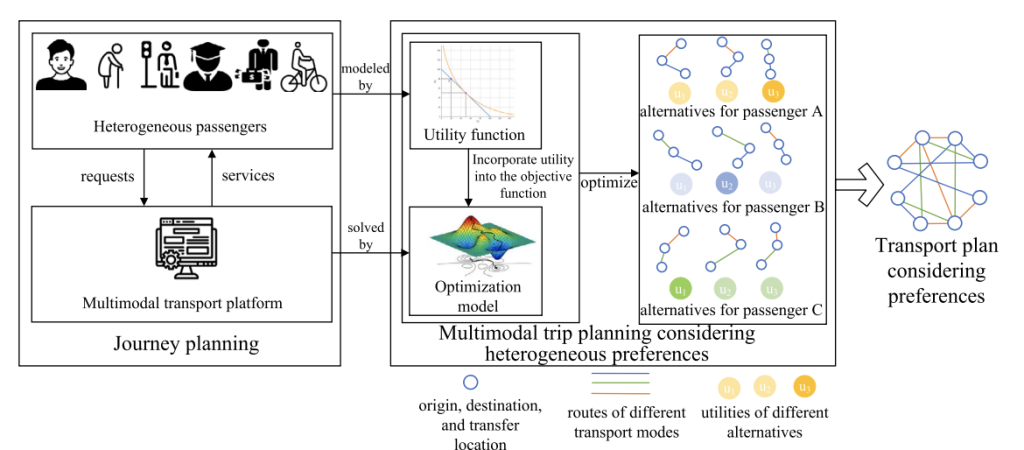How can public authorities and mobility operators offer smarter, more adaptive mobility services that truly meet the needs of diverse users?
A new academic article by partner TU Delft and researchers Yimeng Zhang, Oded Cats, and Shadi Sharif Azadeh contributes to answering this question by proposing a dynamic, preference-based trip planning model that integrates public transport and shared mobility options in real time tested in the Rotterdam Pilot.
Urban transport systems now offer a wide mix of services beyond private cars — from public transport to micro-mobility and ride-pooling. But aligning these options with the needs and preferences of different users remains a challenge. Platforms like Mobility as a Service (MaaS) aim to help by integrating these services, but most current models either focus on the supply side or use generic demand models that don’t reflect the diversity of individual preferences.
The problem with “One-Size-Fits-All” planning
As argued, relying on standardised trip planning methods risks reducing user satisfaction and discouraging the uptake of sustainable modes. What’s missing is a flexible, preference-based planning approach that can adapt to different travel priorities — such as travel time, cost, number of transfers, or walking distance.
The solution: A dynamic, preference-based trip planner
In response, the TU Delft team developed a Mixed Integer Programming (MIP) model enhanced with a meta-heuristic algorithm to support real-time, personalised trip planning. The model combines:
-
Line- and schedule-based public transport services (metro, bus, train)
-
Shared mobility (SM) options, including ride-pooling and micro-mobility
-
Individual user preferences such as cost sensitivity or desired level of comfort
-
A rolling horizon structure that dynamically updates trip options as new requests come in
The framework was tested in a real-world transport network part of the Rotterdam’s pilot and its urban region, allowing the researchers to simulate different scenarios of shared mobility availability and cost levels.

Key Insights from the Simulation
The results highlight how preference-sensitive trip planning can lead to:
-
Higher user satisfaction compared to traditional routing methods
-
More efficient use of shared mobility options, depending on pricing structures
-
Potential to reduce private car use and emissions, if users are given options that match their actual needs and constraints.
Towards more responsive and integrated mobility systems
As urban mobility systems grow more complex — combining fixed public transport with flexible, on-demand and shared services — the challenge is no longer just about availability, but about orchestration. This research offers a powerful contribution: a practical method for dynamically matching mobility offers to individual user needs in real time. By moving beyond static routing or average-user models, the approach opens new possibilities for cities to design more responsive, user-centred transport systems, for operators to fine-tune service delivery, and for MaaS platforms to integrate different modes in smarter ways. It also provides a valuable decision-support tool for anyone aiming to shift travel behaviour, reduce car dependency, and increase the uptake of sustainable modes through better service alignment.




